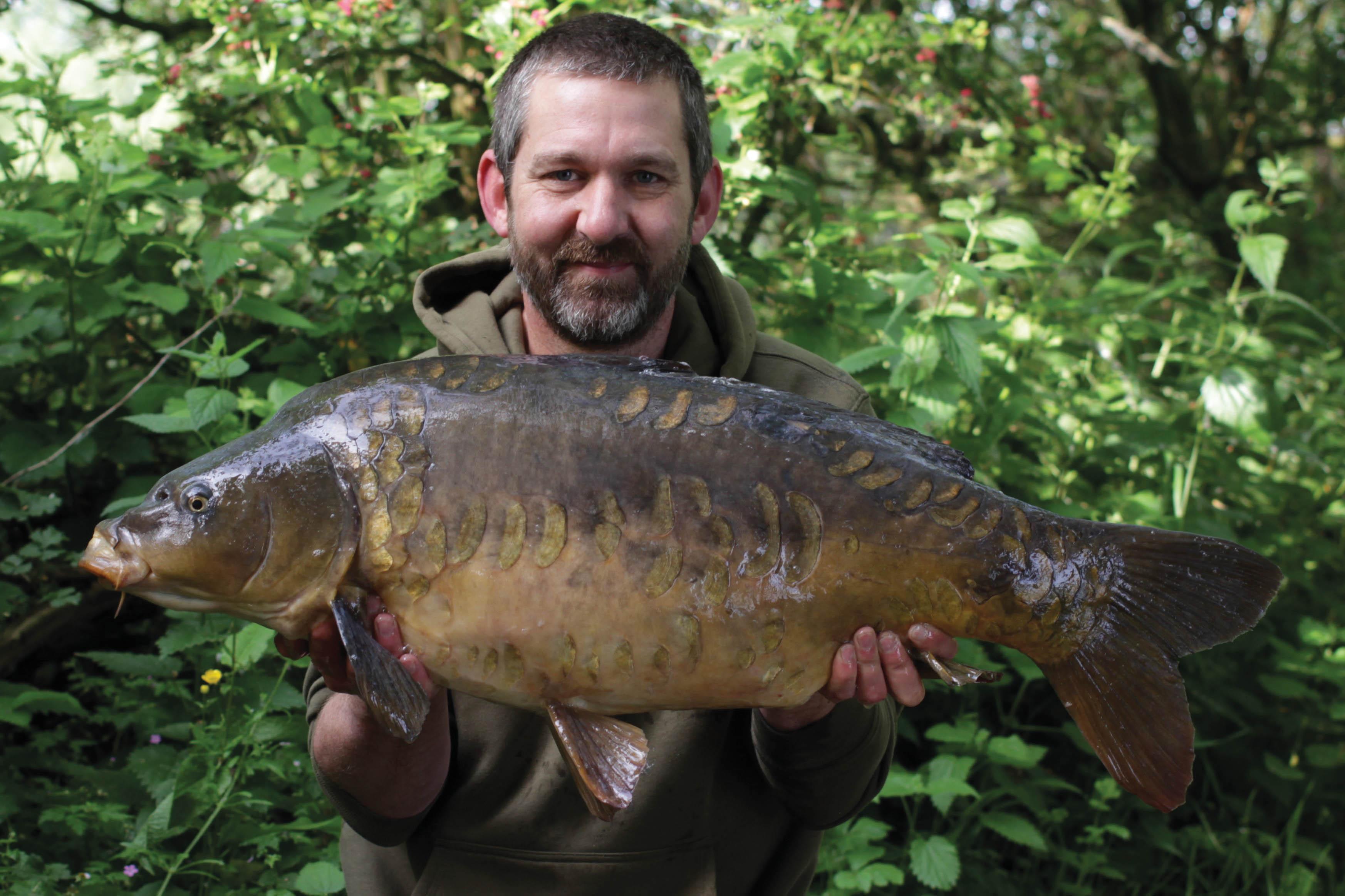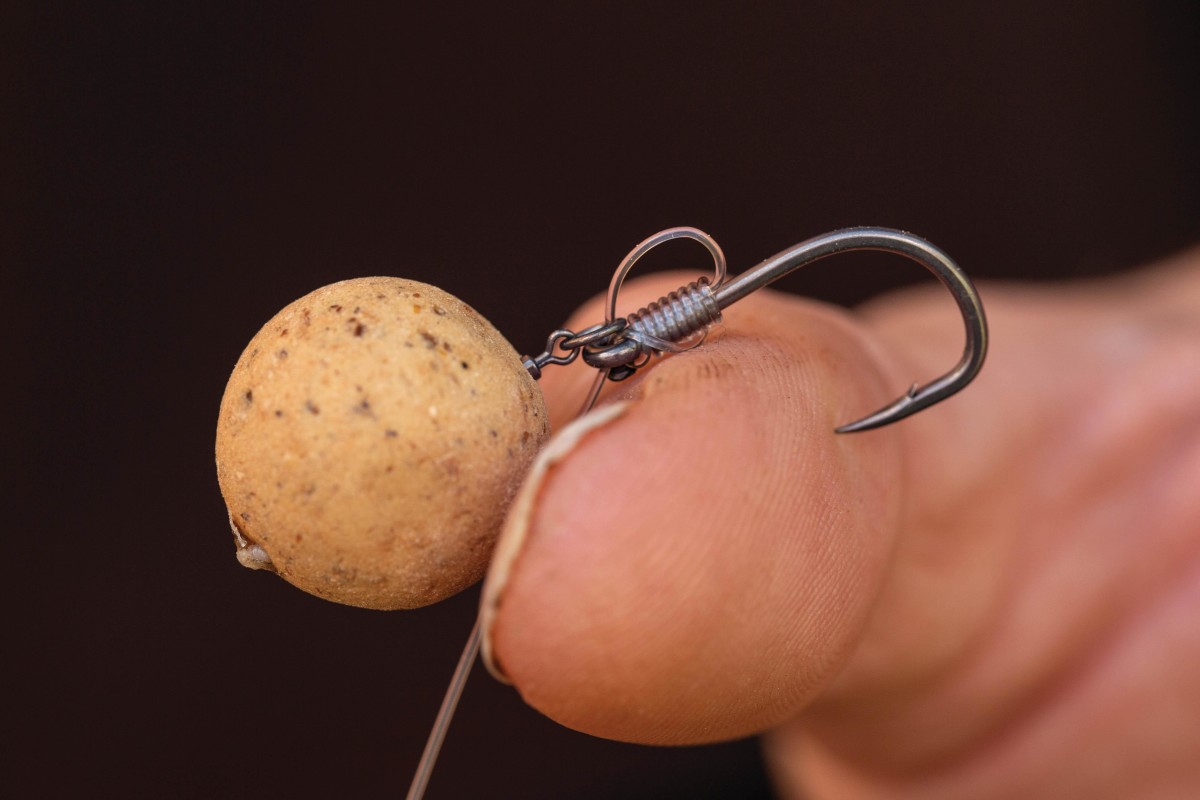
The Existential 'D'
Lewis Read extolls the virtues of the perhaps often disregarded Stiff D Rig, and offers a few tips on exactly how to tie it
Let’s talk a little about a rig with real pedigree: the classic Stiff D. How can such a simple presentation—a rig I personally have so much faith in, and one which is firmly at the top of the tree in terms of my favourite balanced hookbait presentations—cause me to scratch my head like an infant with nits, whilst I ponder how best to convey the tangible benefits angling has undoubtedly accrued through its use? It should be so simple, but that in itself is the problem! You see, I don’t want an interested reader to skim over the content of this article and think that it’s a simple rig offering just consistent presentation, because to do so, would be doing the Stiff D a huge injustice. The fact of the matter is, the rig has indisputable big-carp pedigree, and has accounted for more monstrous carp than you or I can easily comprehend.
Just like the Hinged Stiff Rig, the Slip D is a pretty industrial-looking presentation, and also just like the Hinged Stiff, it attains a significantly greater degree of finesse, simply through addition of a semi-buoyant hookbait to lighten the components, control the way the hook sits in relation to the hookbait, and ensure that the hook reacts and drops into a position that ensures excellent hook-holds.
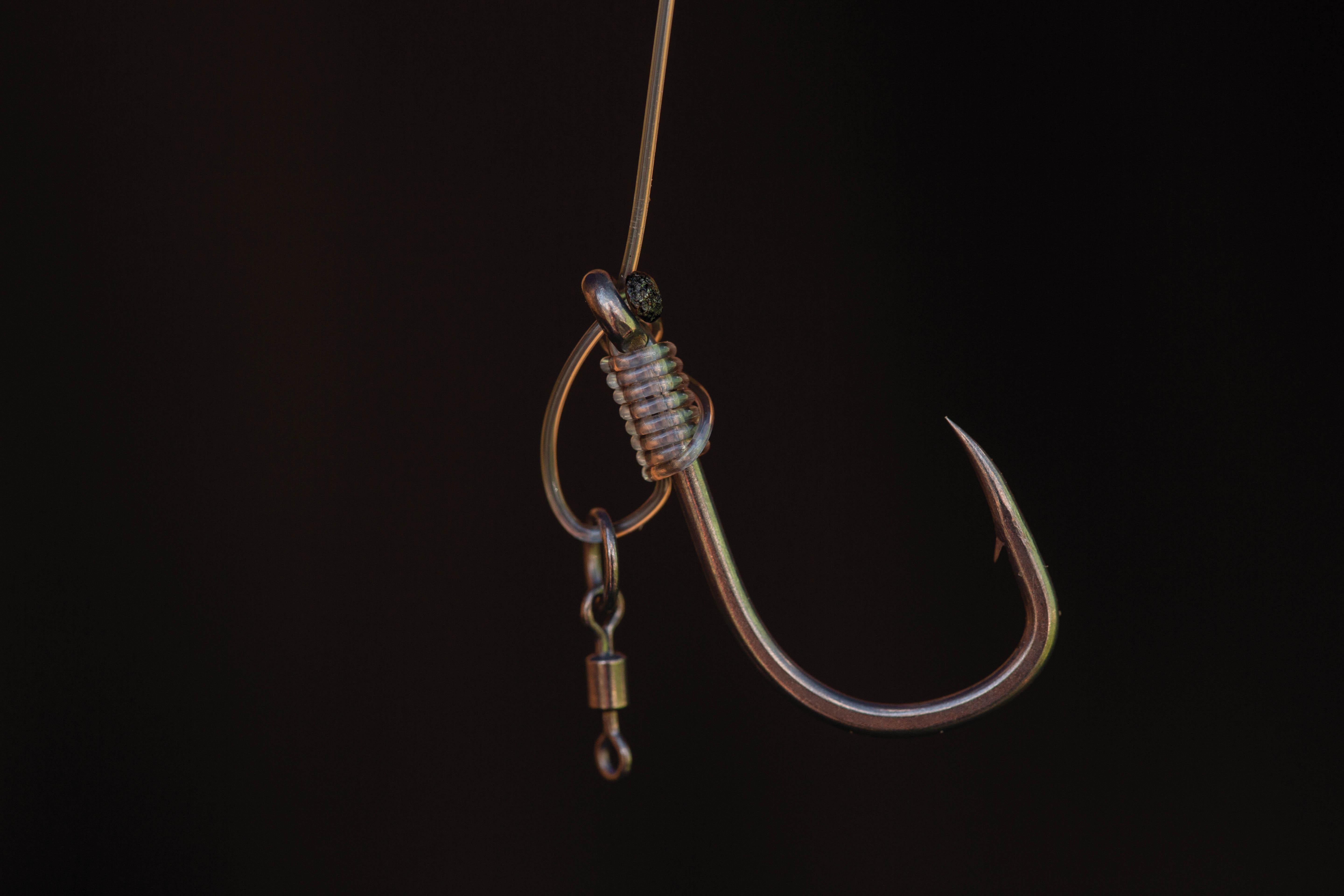
The revolutionary application of a ‘D’-style bait attachment, combined with a semi-stiff hooklink material really came to the fore with the advent of Amnesia. Amnesia is a monofilament leader and tippet material available in several colours, imported from the States. It successfully bridged the requirement for the hooklink to be supple and flexible enough to allow the hookbait to enter the fish’s mouth when inhaled, and be stiff enough to ensure that the rig reacted very differently to 90 per cent of mainstream presentations at the time.
It largely coincided with the arrival of other revolutionary products on the carp scene, like leadcore. These enabled safe, strong helicopter-style leaders to be tied, which also happened to be absolutely perfect for stiffer hooklinks. Amnesia, then, was very quickly picked up on, as an extremely reliable boom material for the Hinged Stiff Rig too. Consequently, it seemed like we all ended up with a spool or two in our tackle boxes. Once again, the rig revolution moved forward at pace, thanks to anglers identifying broadly separate products from different angling scenes and then adapting them—it turned out that we got the best from both products, as they worked perfectly together in a new carp-angling application.
Enough of the old-man history lesson, though, let’s consider the mechanics and application of the rig, as I also offer a general guide to current, recommended components which work effectively in the context of this presentation…
Fundamentally, no matter which direction the fish approaches the hookbait, the hook can only enter the fish’s mouth bend first, because of the semi-stiff hooklink. This means that the hook is primed with the point prone the very moment the fish sips the hookbait through those big old rubbery lips.
Undoubtedly, the gap between the hook shank and hook ring swivel created by mounting the bait on a conventional or extended ‘D’, means that the hook will separate and always naturally drop down too—far quicker than a shank-mounted bait due to the offset—greatly enhancing the rig’s capacity to grab hold in a good secure portion of the mouth.
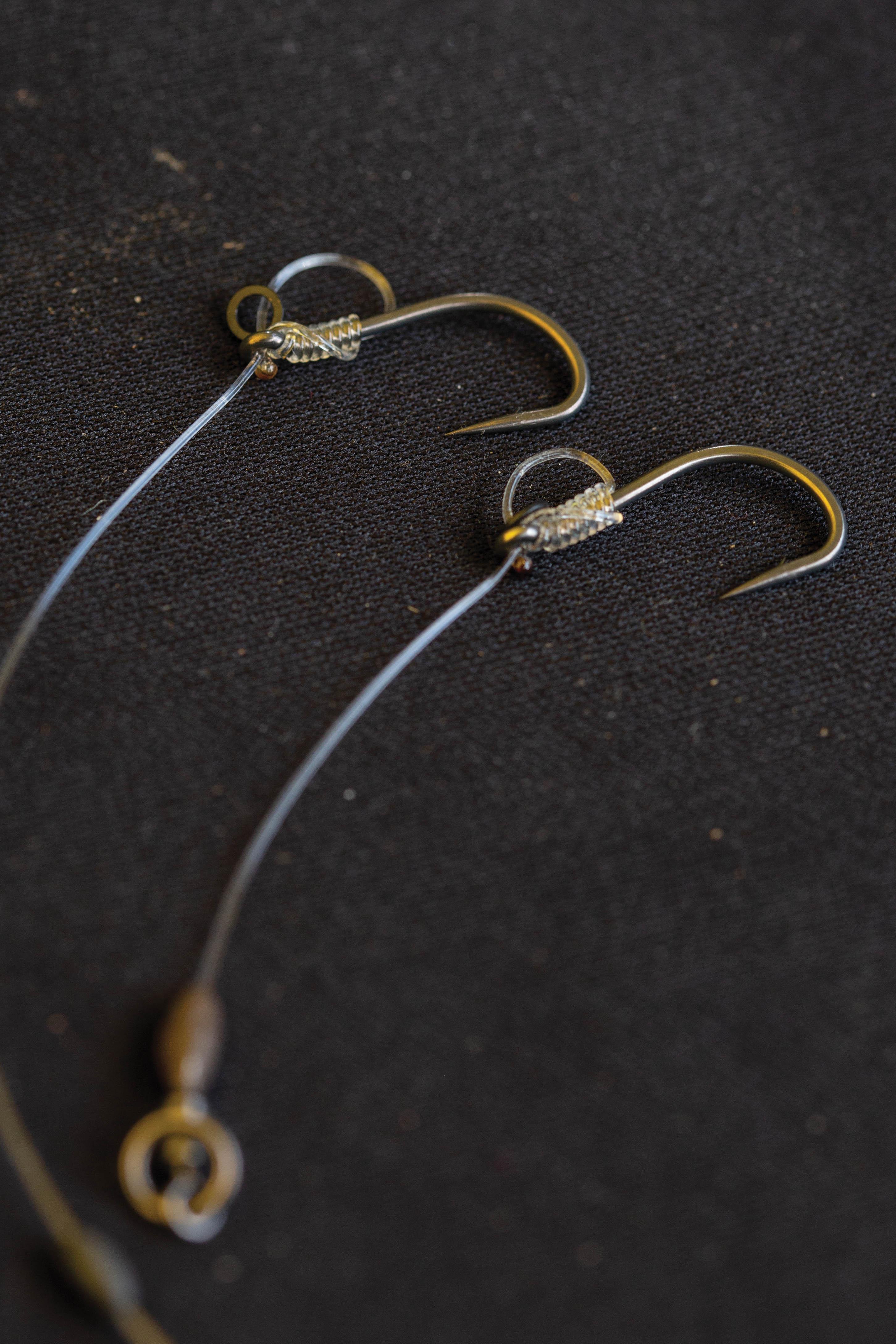
BALANCED HOOKBAITS: they just make this rig work
The balanced hookbait that many seasoned D-Rig anglers prefer, is absolutely key for several reasons…
There is the suggested benefit of it negating the weight of the hook. To be honest, I’d say I’m largely dubious about the claimed benefits of balanced hookbaits behaving like a freebie, especially in the context of a hookbait which is tethered on a short, stiff hooklink—it’s hardly a confidence rig, is it?
The real benefit is surely the speed with which the hookbait flicks up into the fish’s mouth—the hook travels up into the carp’s mouth faster, and to the full extent of the rig’s movement, in an instant. A rig which reacts lightning quick, will always nick bites from cagey fish that tentatively test baits. This means that the rig is highly effective on venues which see a fair degree of angling pressure.
The combination of the balanced hookbait and semi-stiff hooklink ensures that the rig lays out extremely consistently after the impact of the lead with the lakebed. If you get a decent drop as the lead lands, you can be fairly well reassured that it’s fishing. As such, the rig promotes a feeling of confidence and inner contentment. It’s not going to tangle and you know it’s laying out nicely. There is no chance of the hookbait rotating under its own weight and lifting the hook awkwardly either… in two words, it’s dreamy!
The balanced hookbait tends to sit just over the hook, and if ever there was a better, and non-gimmicky concealment of a hook than it being hidden by the bait it’s attached to, I certainly have yet to see it.
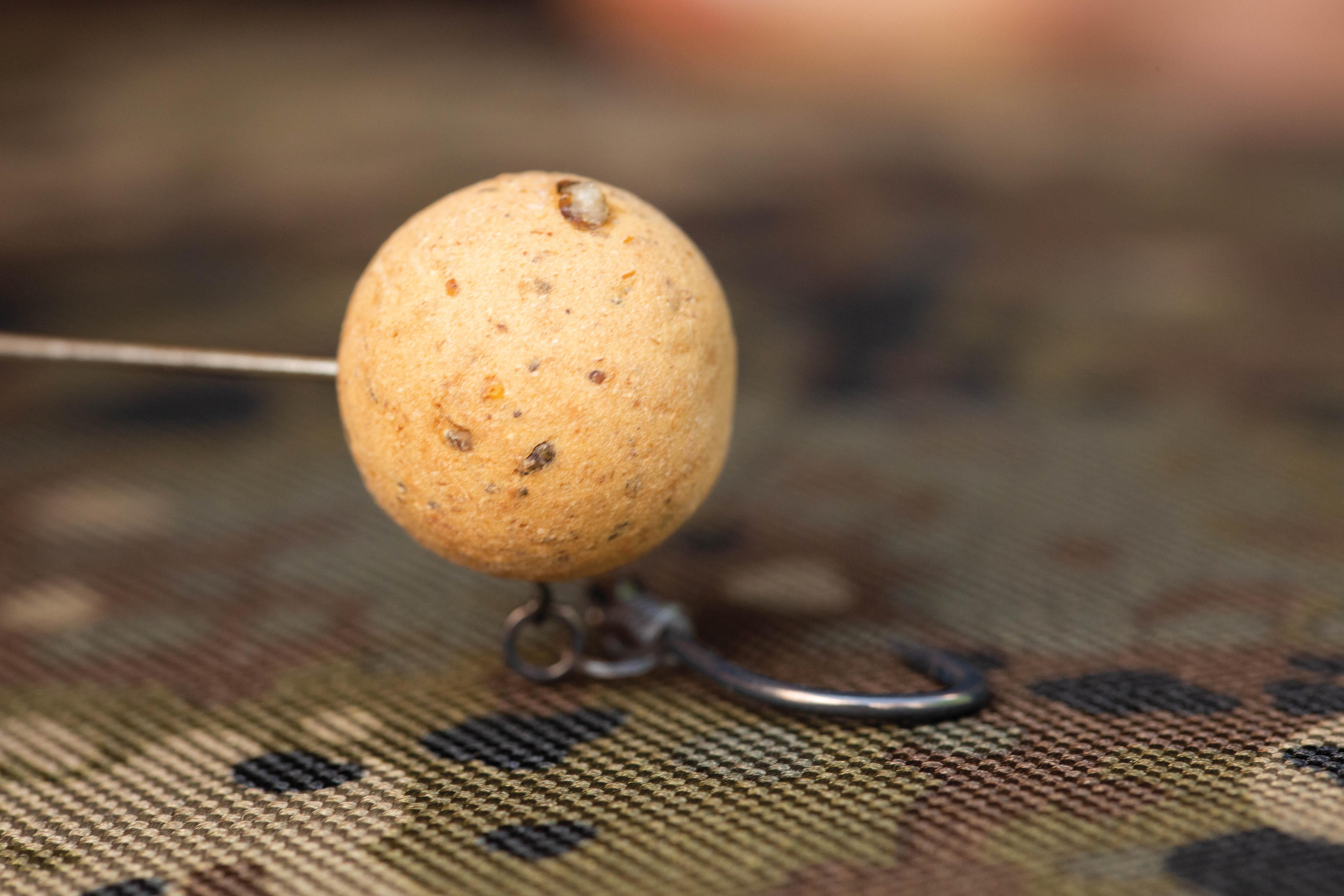
Also, with the hookbait positioned in such close proximity to the hook, there is realistically no way the bait can lift without the hook entering the fish’s mouth, yet the separation as the bait rattles around in that cavernous orifice is still significant. If you want to experiment with the size of the ‘D’, there is some scope for fine-tuning to your own preference. Scotty Karabowicz—Thinking Anglers’ General Manager, and seasoned and successful big-fish angler—touches on this elsewhere in this article, so I’ll not say any more, as it’s simply not necessary.
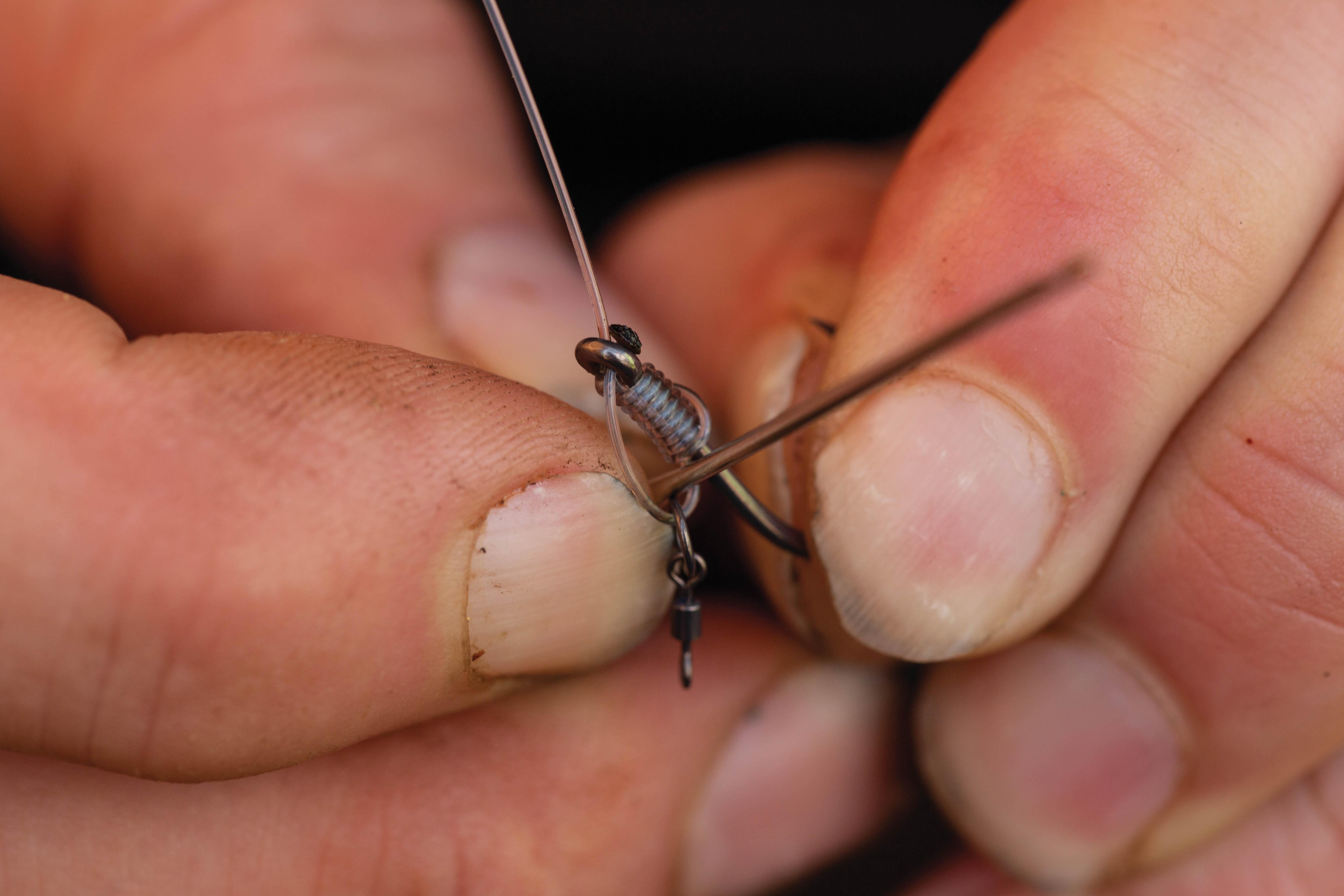
Do I need to state what balanced hookbaits are and how to make them? I’m sure most of you will know what a Snowman Rig is, or a wafter, but this is a great presentation with all sorts of hookbaits, including balanced nuts, plastics, and even baits like ‘Rami’ or a cluster of maggots balanced with a small piece of cork or foam.
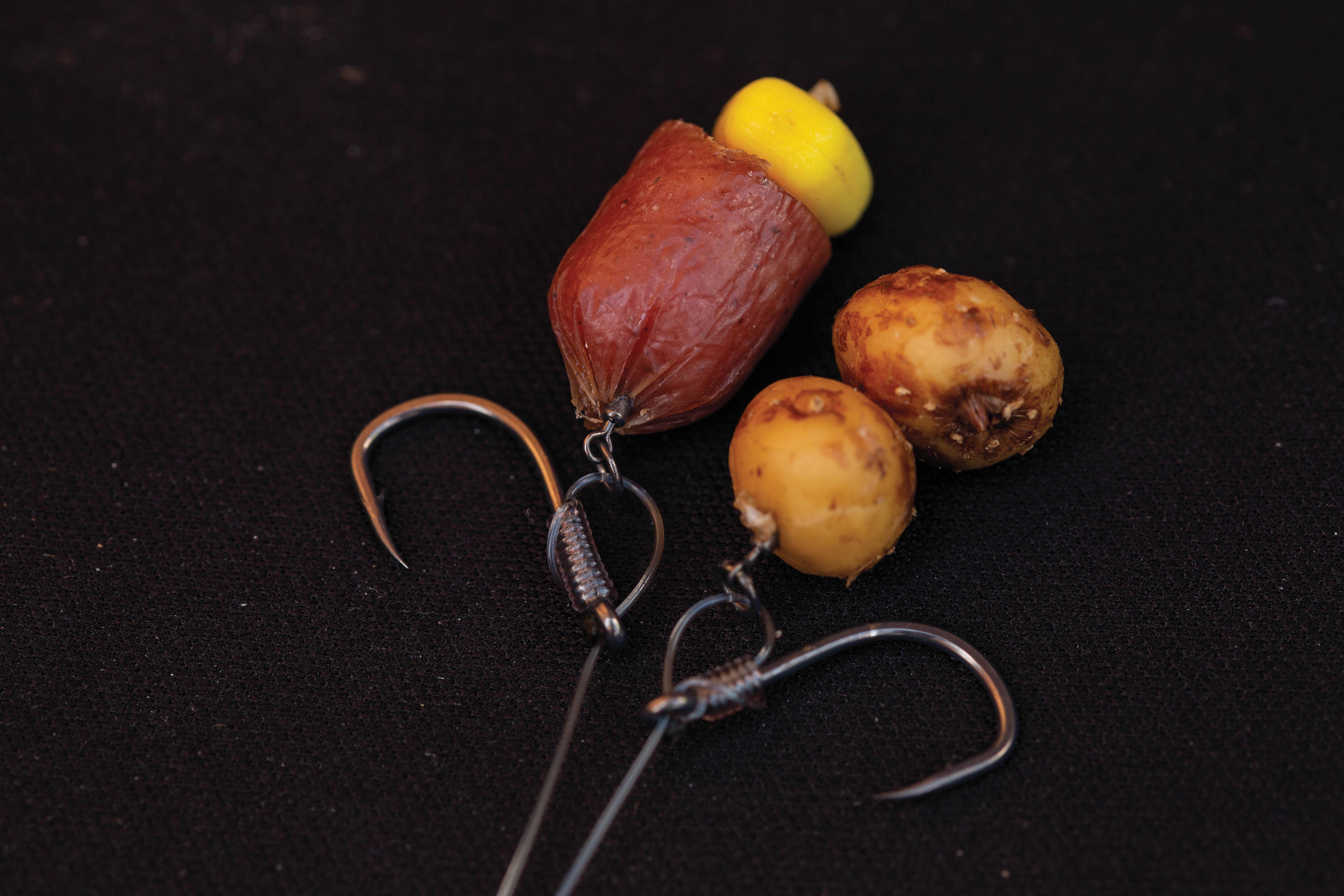
COMPONENTS AND LAKEBED TYPES: making them work in harmony
It’s a rig which, as mentioned, is made for hard spots, but in reality, it will work just as well on any clean silt areas that aren’t filled with ‘erk’ (filthy leafy detritus). All you need to do is tease up the leadcore safety top bead, to ensure reasonable presentation in 95 per cent of circumstances.
Component-wise, I’m always wary of being too prescriptive about what you should use. Obviously, I will relate to products that are either in, or will very shortly be available from the Thinking Anglers range—please forgive me! Ideally, hooks should feature either a straight, or out-turned eye. The hook will then remain correctly positioned with the hooklink, without the gape being closed by a stiff hooklink to leave the eye at an acute angle. Hooks really don’t need to be lightweight or of fine wire. In fact, I like a good strong, heavy-duty hook. Obviously these are stronger, and their weight almost certainly helps the hook drop even more aggressively.
Hooklinks can be a stiff coated braid—and left coated, obviously—if you’re desperate to be different, or you want to use something brutally strong for the most extreme carp-angling scenarios. Ninety per cent of the time, the benefits of a dedicated monofilament, be it copolymer or fluorocarbon, far outweigh any disadvantages, and this is what I would recommend. Mono materials like Think Link, or fluorocarbons in diameters between 0.45mm and 0.55mm are perfect, the choice being down to the finite feel—“Do you want it stiff, sir? Do you sir? Ooh!”
I’ll stress that readers should take recommendations as just that, recommendations, but based on experience. I’ve actually seen anglers use monos as low as 0.35mm to great effect, but they tend to use a conventional knot on the rig swivel, instead of the loop which offers higher diameter materials a bit more essential movement.
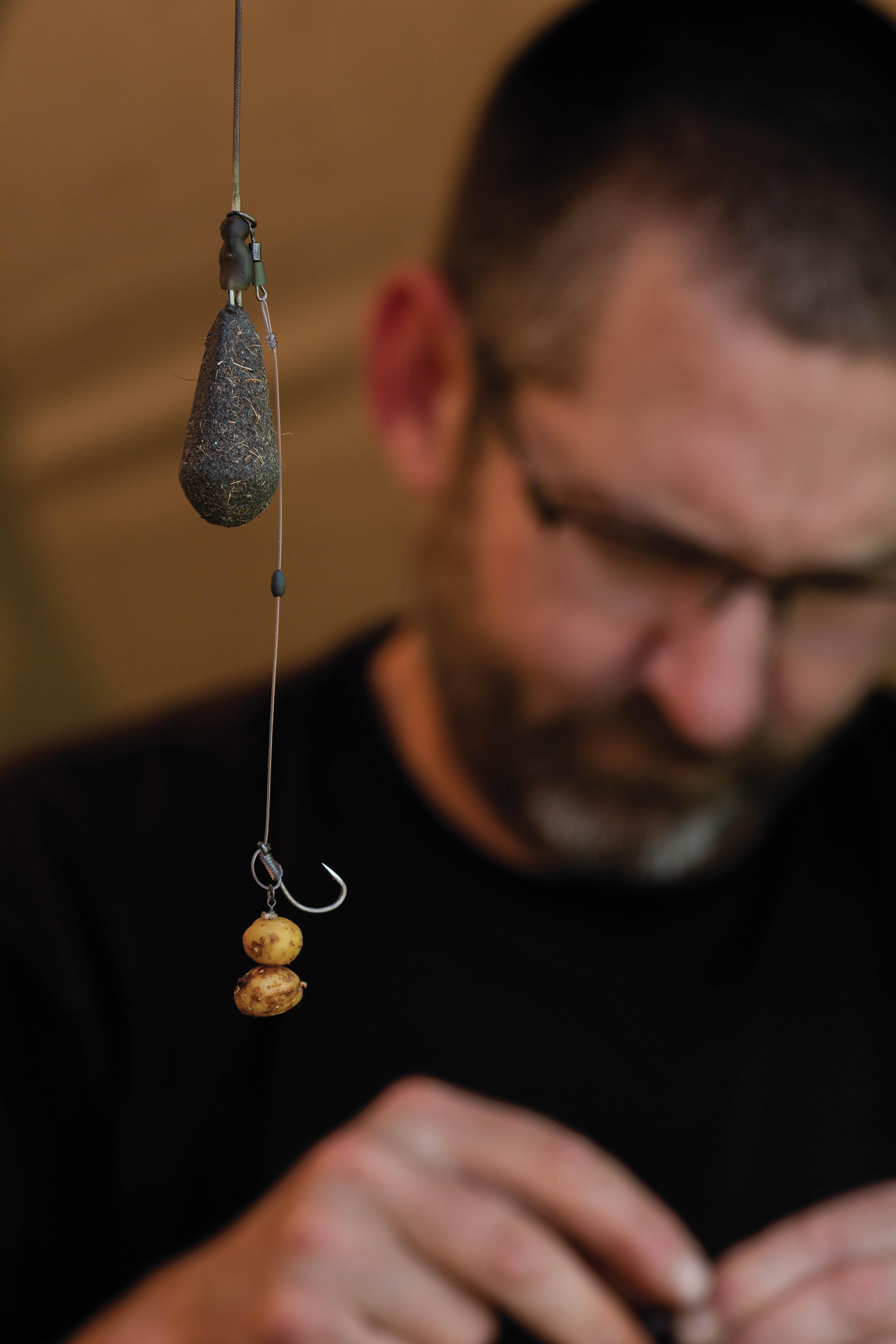
Hooklink length can vary, and should be related to bait application and the lead arrangement. If you’re thinking about having a play for the first time, I would suggest keeping it shortish, at around 6-inches on a heli-lead arrangement.
In this day and age, when there is a proliferation of really effective rigs, the good old D-Rig has become a bit of an old man’s special, but with age comes wisdom. If you ignore it, then you’re missing a trick. Then again, maybe you should stick with your new, so-called wonder rigs, and leave us old ’uns to plunder monster carp using this very special presentation.
